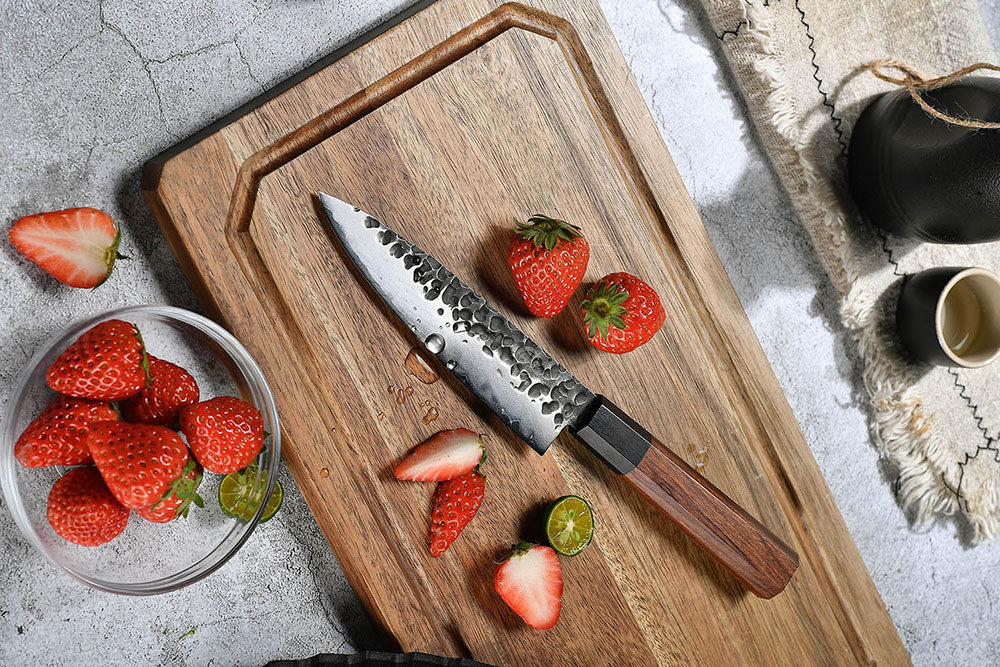Whether you are an aspiring professional in the kitchen or just a budding home cook, knives are an essential piece of kitchen equipment you can own. Generally speaking, buying a professional 8-piece kitchen knife set is a much simpler approach to assist you in your culinary journey. However, in this post, we'll wrap our heads around the idea of "less is more" and pick out the three most important kitchen knives best for beginner cooks.
Western Chef Knife
Representative of Western-style kitchen knives, it has diverse and comprehensive uses. The chef's knife has a broad blade with a curved edge and a length of about 15 to 20 cm, suitable for continuous and fast cutting of meat, fish, and vegetables. The user only needs to lift the second half of the knife to easily cut the ingredients into filaments, strips, or cubes. It is especially suitable for those who prefer western-style spice ingredients such as basil and coriander. It is the most indispensable part of cooking knives.
Japanese Santoku Knife
Also known as Japanese chef knives, all-purpose knives, are the must-have knives in the Japanese family. With a length of about 15 to 20 centimeters and a thin, sharp blade suitable for Asian-style cuisine. The name "Santoku" is derived from the Japanese pronunciation of "santokuhōchō." Many Santoku knives are designed with a row of grooves on the blade to create a band of air when cutting food, preventing the food from sticking to the blade. The wide blade makes the Santoku knives better to hold and apply force, making them more comfortable and safe to use.
Related articles: Chef VS Santoku Knife | What's the difference between them?
Classic Paring Knife

Also called peeling knives or uility knives, the 8 - 10 cm length and short, sharp blade make them suitable for cutting perfect slices and deep into small crevices. It can be used for delicate steps such as peeling fruit or scooping out cores. Since most fruits are cut and eaten directly, it is recommended that fruit knives not be mixed with other knives used for cutting raw foods. In addition, some fruit knives are designed with a serrated blade, which is suitable for cutting fruits with more moisture, such as tomatoes and peach.
Let's Warp It Up
These three cooking knife recommendations are the most common for beginners/first-time knives. There are many more knives to learn, stay tuned for more blog updates! See you soon!



